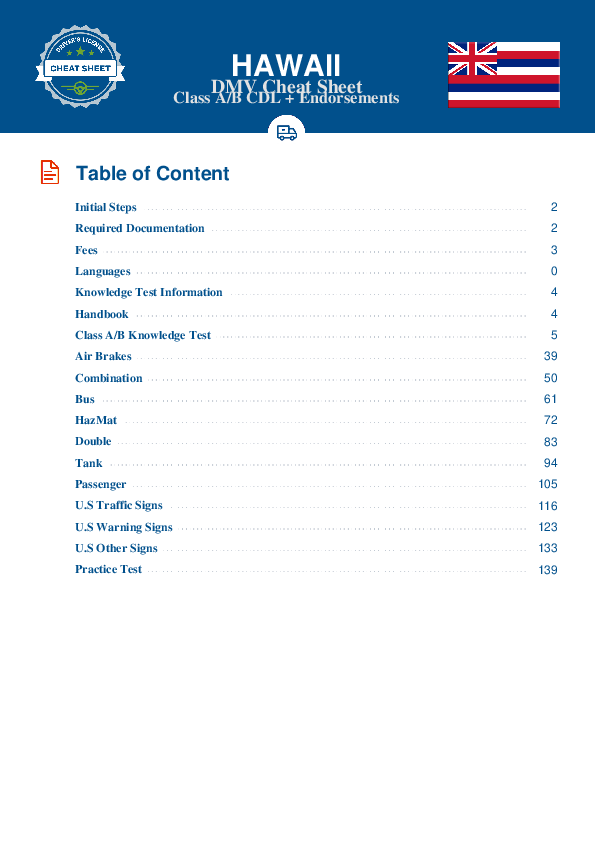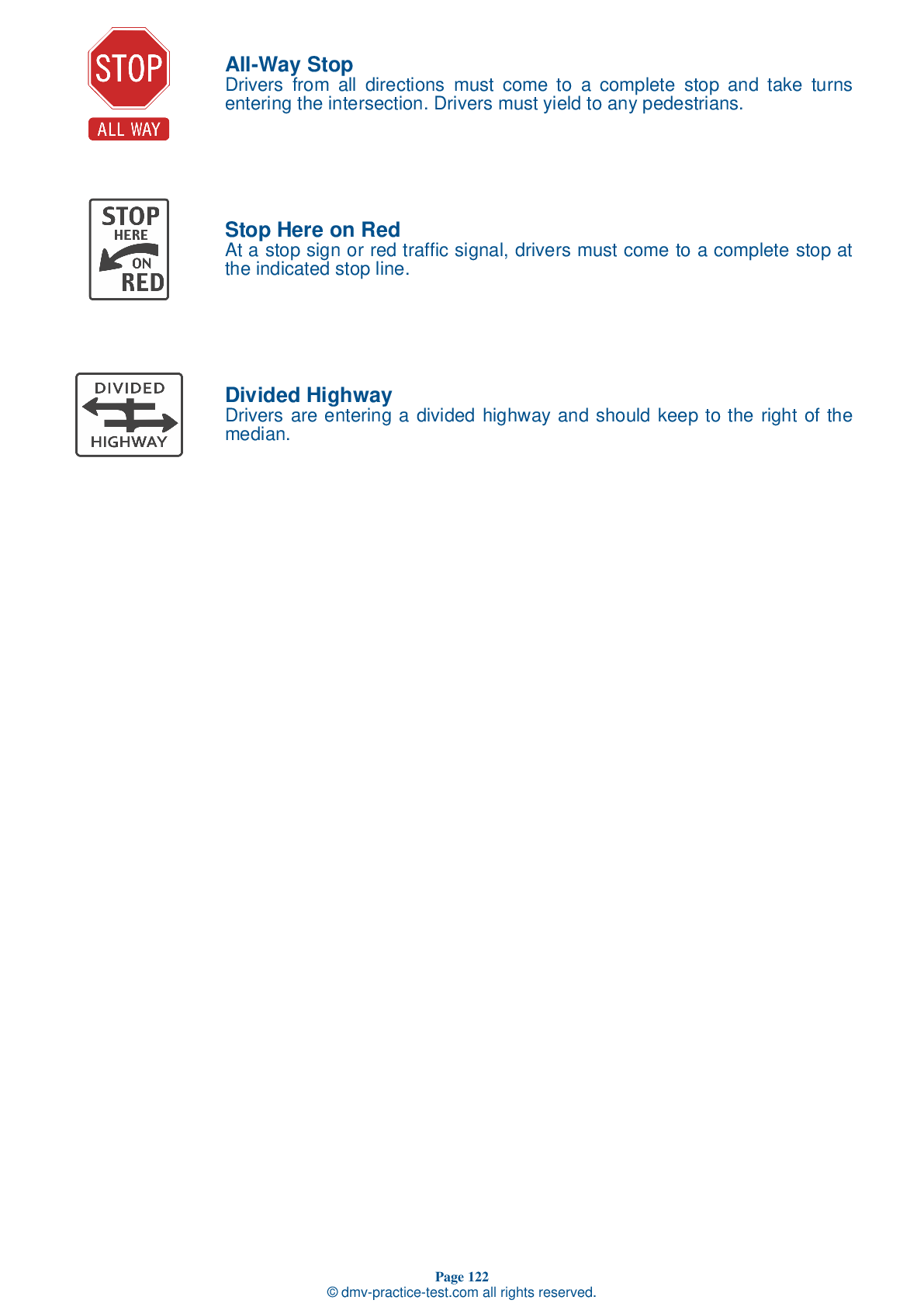Hazmat Test | Hawaii 2025 #2 Page 2 of 5
On our website, we provide FREE practice - CDL hazmat test online! The official exam test consists of several obligatory parts, with all of them checking your knowledge of different blocks of road rules. If you need to obtain a HI CDL hazmat endorsement in 2025, practice as much as possible. Free sample tests published on our website will help you check and improve your knowledge and boost your grades. Please bear in mind that Hawaii requirements for issuing a hazmat endorsement for CDL may vary from those established in other states.
7 . A material’s hazard class reflects:
A hazardous material will be placed into one of nine classes to explain the type of risks associated with the material.
8 . Placards showing the type of hazardous materials in a vehicle are usually which shape?
In general, vehicles carrying hazardous materials are required to display diamond-shaped warning signs on all four sides. These warning signs are called "placards."
9 . If a shipping paper describes both hazardous and non-hazardous materials, the hazardous materials may need to be:
If a shipping paper describes both hazardous and non-hazardous materials, the hazardous materials must be distinguished in one of three ways. They must be entered first on the shipping paper, highlighted in a contrasting color, or properly marked with an "X" in a column titled "HM."
10 . As a driver, which of the following is not your job at the scene of an accident?
If you are involved in an accident while carrying hazardous materials, it is your responsibility as the driver to keep people away from the scene; limit the spread of material if you can safely do so; inform emergency response personnel of the dangers posed by the materials; and provide emergency personnel with the shipping papers and emergency response information. Unless you have protective equipment and the necessary training, do not try to fight hazardous materials fires yourself.
11 . If a driver stops and leaves their vehicle while transporting hazardous materials, the shipping papers should be:
If a driver stops and exits their vehicle, the hazardous materials shipping papers must be left on the driver's seat.
12 . Shipping papers should be:
When transporting hazardous materials, shipping papers should be kept in a pouch in the driver's side door, or in another location where the driver is able to easily reach them while their seat belt is fastened. The papers must be easily visible to anyone who is entering the cab.
See the exact questions that will be on the 2025 Hawaii DMV exam.
99.2% of people who use the cheat sheet pass the FIRST TIME
Lillian MCcranie explains how our CDL study guide was helpful in passing the exam and recommends it to everyone.
Cameron tells us how he purchased the CDL exam, and found it to be a useful tool which helped him pass the exam and find a job.



